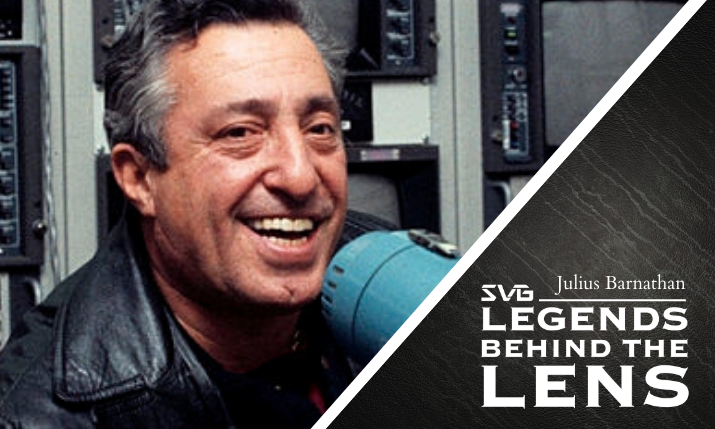Legends Behind the Lens: Julius Barnathan
The original behind-the-scenes revolutionary laid the foundation for Olympics and Election coverage at ABC
Story Highlights

The story of American sports television is engrained in the history of this nation, rising on the achievements of countless incredible men and women who never once appeared on our screens. During this pause in live sports, SVG is proud to present a celebration of this great industry. Legends Behind the Lens is a look at how we got here seen through the people who willed it to be. Each weekday, we will share with you the story of a person whose impact on the sports-television industry is indelible.
Legends Behind the Lens is presented in association with the Sports Broadcasting Hall of Fame and the SVG Sports Broadcasting Fund. In these trying times — with so many video-production professionals out of work — we hope that you will consider (if you are able) donating to the Sports Broadcasting Fund. Do so by visiting sportsbroadcastfund.org.
___________________________
Julius Barnathan was the original behind-the-scenes revolutionary. When he was head of broadcast operations and engineering for ABC, Barnathan’s technical know-how infused the network’s every innovation, from hand-held cameras and slow motion to character generation and closed captioning. Throughout his 40 years at ABC, he engineered creative dreams into broadcast reality and helped jump-start the careers of others who would do the same.
“Julie was a visionary,” explains Preston Davis, Barnathan’s successor as President of BOE at ABC. “Julie understood how to take technologies and implement them in ways that drove the creative process.”
Barnathan began roaming the floors at ABC in the 1950s.
“He had experience in almost every division of ABC,” explains Joyce Barnathan, Julius’ daughter. “He had this comprehensive look at all the different aspects of the company.”
Barnathan’s understanding of the business allowed him to turn the pipe dreams of ABC Sports President Roone Arledge into broadcast standards.
“Julie was a visionary. Julie understood how to take technologies and implement them in ways that drove the creative process.” – former ABC executive Preston Davis
When Arledge wanted to slow down the on-screen action for ABC’s Olympics coverage, he brought the idea to Barnathan. Not only did the engineer create the technology required for slow-motion stop action, he financed it.
“He put up the first million dollars to develop it,” explains Lou Siracusano, Chairman and CEO of Azzurro HD and a longtime friend of Barnathan. “He had a lot to do with making Roone Arledge successful.”
Arledge and Barnathan were equal partners in ABC’s technical endeavors, working closely to develop the technology necessary to fulfill Arledge’s vision of sports as entertainment. Barnathan made ABC’s coverage the best in the business by creating and implementing such standards as animated graphics, slow motion, instant replay and split screen.
“The first priority was creativity, and the second priority was cost,” Davis says. “A lot of people got those things backwards, but Julie always believed that we should find ways to use technology to drive the creative process and we’ll worry about the cost later.”
One of Barnathan’s most ingenious implementations of the creative process was the long-lens camera he developed for the 1976 Olympics in Innsbruck, Austria. The camera allowed ABC Sports to show the whole mountain during downhill ski races, but Barnathan did not stop there.
Barnathan was most proud of his least-acclaimed innovation, closed captioning. The engineer spent eight years developing the technology that made him a hero to the hearing-impaired community.
“My dad took it on as his project,” Joyce says. “If you couldn’t watch television, you were not quite in the mainstream, and suddenly he brought TV to all those people. It was incredibly meaningful.”
Barnathan persuaded ABC to show 20 hours of primetime closed-captioned programming per week and was rewarded with an honorary doctorate from Gallaudet University, the world’s only university for the deaf. On his lengthy list of accolades, that award stands out from the rest.
In addition to his own accomplishments, Barnathan was a mentor in the truest sense. The successful media careers of his three children are a testament to his love for the industry, which lives on through each of the lives that he touched.
“He motivated companies, he motivated people,” Siracusano says. “He was an inspiration to anybody who worked with him.”
